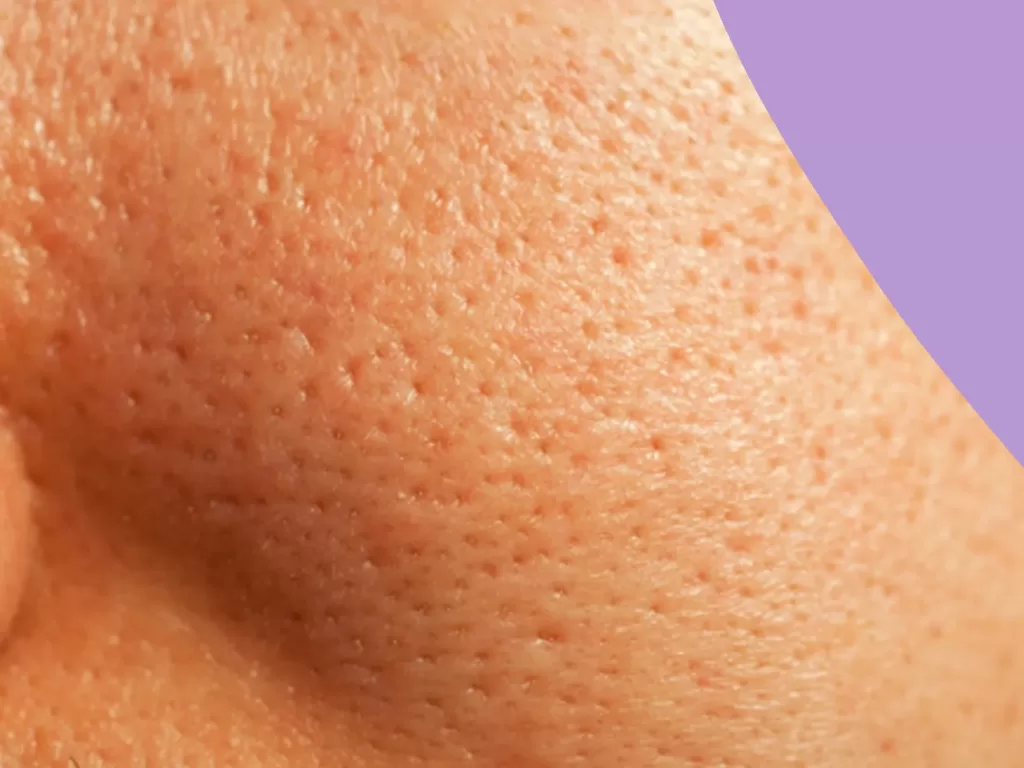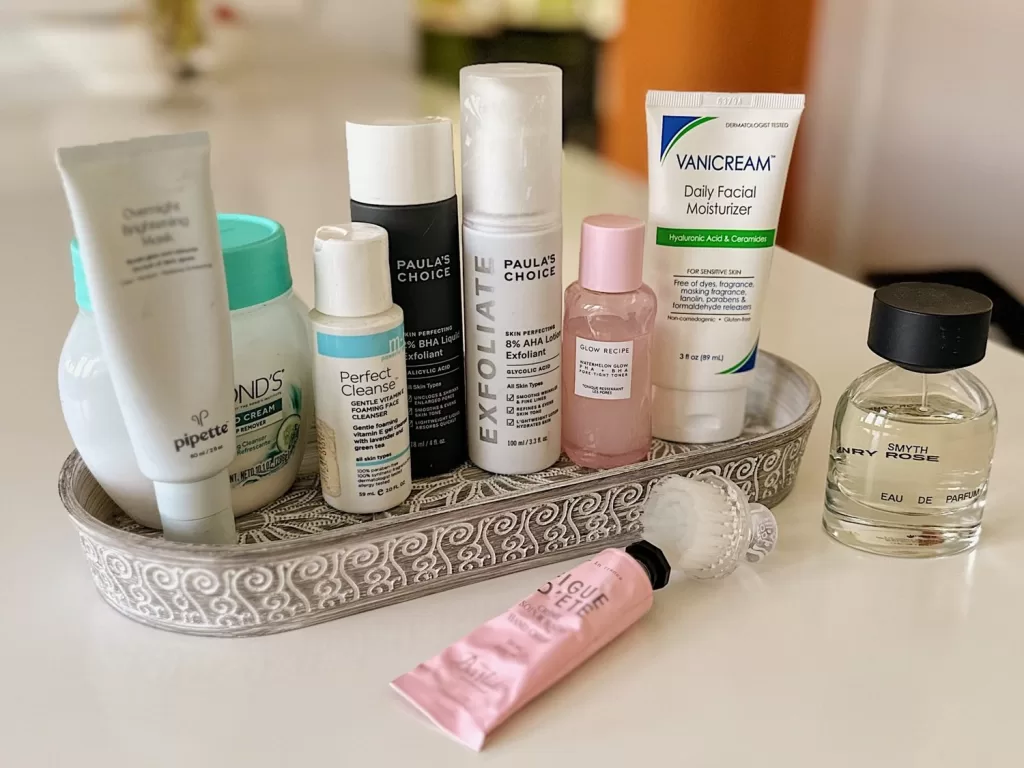Over-layering Skincare Risks: What You Need to Know
In the quest for flawless skin, many people layer multiple skincare products without realizing the potential risks. While a well-curated routine can transform your skin, over-layering or improper application can lead to irritation, breakouts, and diminished product effectiveness. In this article, we’ll explore the risks of over-layering skincare products, why less can often be more, and how to craft a balanced routine for optimal results.
Risks of Over-Layering Skincare Products
1. Skin Irritation and Sensitivity
Combining too many active ingredients, like retinoids, AHAs, BHAs, or vitamin C, can overwhelm your skin. This may cause redness, peeling, stinging, or burning sensations, especially if you have sensitive skin.
Creating Your Personalized Skincare Routine for Sensitive Skin
Customizing a skincare routine for sensitive skin involves understanding your unique needs and choosing products that soothe and protect. Here’s how you can tailor a regimen that works seamlessly for you:
Morning Routine
- Start with a Gentle Cleanser
Use a mild, hydrating cleanser to wash your face. This step helps remove impurities without stripping your skin of its natural oils. - Toning (Optional)
If your skin benefits from a toner, choose one that’s alcohol-free to avoid irritation. - Moisturize and Protect
Apply a lightweight moisturizer to lock in hydration, and don’t forget sunscreen. Opt for a mineral-based SPF of at least 30 to shield your skin from UV damage.
Evening Routine
- Cleanse to Refresh
Repeat the cleansing step to wash away daily grime and makeup. - Hydrate
Reapply a soothing moisturizer, especially if your skin feels dry or tight after cleansing. - Additional Treatments
If you’re using serums or other treatments, this is the ideal time to apply them. Finish off with a moisturizer to seal in the active ingredients.
Weekly Enhancements
- Hydrating Mask
Once or twice a week, treat your skin to a nourishing mask that calms and replenishes moisture levels, particularly if your skin is prone to irritation. - Gentle Exfoliation
If your skin allows, a mild chemical exfoliator can be used occasionally to smoothen the skin’s texture. Look for products with lactic acid or enzyme exfoliants for the mildest touch.
Customize and Adjust
- Personalize Your Choices
Experiment with different product textures and formulations to see what your skin responds to best. If your face requires a richer moisturizer or the weather demands more protection, choose products accordingly. - Monitor Your Skin’s Reaction
Stay in tune with your skin’s signals. Simplify your routine if you notice any sensitivity, such as redness or itching. It might also be necessary to adjust your sunscreen application frequency based on your daily activities.
By listening to your skin and adjusting these basic guidelines to fit your needs, you can develop a skincare routine that keeps your sensitive skin calm, healthy, and glowing.
How to Cleanse Sensitive Skin Without Irritation
Cleansing sensitive skin requires a delicate balance to maintain its health and avoid irritation. Follow these tips to keep your skin happy and calm:
- Choose the Right Cleanser
Opt for gentle, hydrating cleansers that nourish rather than strip your skin. Look for products designed specifically for sensitive skin, which are fragrance-free and formulated with calming ingredients. Creamy or milky cleansers are typically a great choice as they maintain moisture and leave your skin smooth. - Mind the Water Temperature
Always use lukewarm water when cleansing. Hot water can exacerbate sensitivity issues by drying out the skin, while cold water may not effectively remove impurities. - Gentle Application Techniques
Apply your cleanser with your fingertips, using soft, circular motions. This encourages effective cleansing without triggering irritation. Avoid using washcloths or facial brushes as they can be too abrasive. - Rinse and Pat Dry
Ensure you thoroughly rinse off the cleanser, leaving no residue. Pat dry your face with a soft towel instead of rubbing it, as this is kinder on sensitive skin. - Avoid Over-Cleansing
Stick to cleansing twice a day—morning and night. Over-cleansing can strip essential oils, leading to dryness and further sensitivity.
By following these steps, you can cleanse your sensitive skin effectively, keeping it calm and well-nourished without irritation.
Discover Common Triggers for Sensitive Skin and Learn to Identify Them
Sensitive skin can be unpredictable, and understanding your own triggers is key to managing it effectively. Identifying these factors isn’t always straightforward, but knowing what commonly causes irritation can help.
Typical Triggers for Sensitive Skin
- Ingredients in Skincare Products: Many people find that their skin is sensitive to certain components in skincare products. Common culprits include fragrances, alcohol, and preservatives. For instance, many find that products containing alcohol or parabens lead to irritation.
- Environmental Factors: Weather changes, such as extreme cold or heat, can exacerbate sensitivity. Wind and dryness can also contribute to irritation, making your skin more vulnerable to redness or itching.
- Lifestyle Habits: Stress, lack of sleep, and poor diet can all make your skin more reactive. These internal factors play a substantial role in the health and appearance of your skin.
- Physical Irritants: Fabrics, chemicals in cleansing products, or excessive washing might disrupt your skin’s barrier, leading to increased sensitivity.
How to Identify Your Triggers
- Keep a Skin Diary: Track what you use on your skin and note any reactions. This includes skincare products, as well as your diet and environmental exposures.
- Patch Testing: Before introducing a new product into your routine, test it on a small, discreet area of skin. Look for any signs of irritation, such as redness or itching, within 24 to 48 hours.
- Consult a Dermatologist: If you’re struggling to identify your triggers, a professional can perform tests to determine specific sensitivities and provide targeted advice.
Understanding the specific triggers for your sensitive skin is the cornerstone of crafting a skincare routine that soothes rather than irritates.
Incorporating Weekly Treatments for Sensitive Skin
If you struggle with sensitive skin but still want to enjoy the benefits of weekly treatments, there are simple and effective ways to do so without causing irritation.
1. Hydrating and Calming Masks
A great starting point is to use hydrating or calming masks once or twice weekly. These masks are designed to nourish your skin and soothe any redness or discomfort. Opt for ingredients like aloe vera, oatmeal, or chamomile, known for their gentle, calming properties.
2. Gentle Exfoliation
Exfoliating can be beneficial, but it’s crucial to choose a method suitable for sensitive skin. A mild chemical exfoliator can help remove dead skin cells and unveil a smoother complexion. Look for products with lactic acid or mandelic acid, as they tend to be gentler on the skin.
3. Practice Moderation
With sensitive skin, less is always more. It’s essential to avoid over-application. Stick to the recommended frequency and product amounts. Always perform a patch test with new products to ensure compatibility with your skin.
4. Follow Up with Moisture
After any treatment, always follow up with a moisturizing product that suits sensitive skin. Consider those with ingredients like hyaluronic acid or glycerin to lock in moisture without causing irritation.
By choosing products carefully and using them sparingly, you can successfully incorporate weekly treatments into your sensitive skin routine, maintaining a healthy and radiant complexion.
How Important is Sunscreen for Sensitive Skin?
If you have sensitive skin, sunscreen is not just important—it’s essential. Sensitive skin is more vulnerable to the harmful effects of the sun, making it crucial to protect it from both short-term damage and long-term effects like premature aging and skin cancer. Daily sunscreen application acts as a barrier against these harmful rays, especially UVA and UVB rays, which can penetrate and further irritate delicate skin.
What to Look for in a Sunscreen?
When choosing a sunscreen for sensitive skin, consider the following:
- Broad-Spectrum Protection: Ensure the sunscreen offers protection against both UVA and UVB rays. This ensures comprehensive coverage from potential sun damage.
- SPF 30 or Higher: Opt for a product with at least SPF 30 for adequate protection. Higher SPF offers more shielding from the sun’s rays without doubling the strength with doubled numbers.
- Gentle Formula: Select a sunscreen that is lightweight and free from fragrances and parabens. These ingredients can often trigger reactions in sensitive skin.
- Non-comedogenic: Choose a sunscreen that will not clog pores to avoid breakouts and further irritation.
- Mineral-Based Ingredients: Consider sunscreens with physical blockers like zinc oxide or titanium dioxide. These ingredients sit on the skin’s surface, reflecting sunlight rather than absorbing it, which can be less irritating for sensitive skin types.
Tips for Application
- Daily Use: Make sunscreen application a part of your morning routine, regardless of the weather. UV rays can penetrate through clouds and windows.
- Reapply Regularly: To maintain protection, reapply every two hours, especially if you’re outdoors, sweating, or swimming.
Selecting the right sunscreen tailored to your sensitive skin’s needs will provide peace of mind and protection, keeping your skin healthy and radiant.
Understanding the Importance of Hydration for Sensitive Skin
Hydration is crucial for maintaining healthy and resilient skin, particularly for those with sensitive skin types. Sensitive skin often has a fragile barrier, making it more susceptible to irritants and environmental stressors. Proper hydration helps reinforce this barrier, ensuring your skin remains supple and well-protected.
Choosing the Right Moisturizer for Your Skin Type
Selecting the right moisturizer involves understanding your unique skin needs:
- For Oily Skin: Opt for a lightweight, oil-free formula. These moisturizers provide necessary hydration without clogging pores or making your skin feel greasy. Look for ingredients like hyaluronic acid, which delivers moisture without weight.
- For Dry Skin: A richer cream is ideal for locking in moisture. Ingredients such as glycerin or shea butter can provide deep nourishment. These elements help create a protective layer on the skin, preventing water loss and maintaining hydration.
Bonus Tips for Moisturizer with Added Benefits
Consider a moisturizer that also offers sun protection to streamline your skincare routine. Products with broad-spectrum SPF capabilities not only hydrate but also shield your skin from harmful UV rays, minimizing premature aging and damage.
By putting these tips into practice, you can ensure your sensitive skin remains healthy, hydrated, and radiant.
Best Serums for Sensitive Skin and Ones to Use Cautiously
When it comes to sensitive skin, choosing the right serum is crucial to avoid irritation and achieve desired results. Sensitive skin types might find gentle serums containing soothing ingredients particularly effective.
Serums Suitable for Sensitive Skin
- Niacinamide Serums: Known for their calming properties, niacinamide helps reduce redness and strengthen the skin barrier, making it an excellent choice for sensitive skin types.
- Hyaluronic Acid Serums: These serums are great for adding hydration without causing irritation. They draw moisture into the skin and leave it looking plump and refreshed.
Serums to Approach with Caution
- Retinol Serums: Often praised for their anti-aging benefits, retinol can be too harsh for sensitive skin. It can cause redness and peeling, so it’s best to start with a lower concentration and only apply it once or twice a week.
- Vitamin C Serums: While effective for brightening and reducing signs of aging, high-potency vitamin C serums can lead to irritation and sensitivity. It’s wise to choose a formula designed specifically for sensitive skin and to introduce it gradually.
Patch Testing: A Crucial Step
Before incorporating any new serum into your routine, conduct a patch test. Apply a small amount of the product to a discreet area of your skin. Monitor for any adverse reactions over 24 hours to ensure compatibility with your sensitive skin.
How Can You Enhance a Skincare Routine for Sensitive Skin?
Enhancing a skincare routine for sensitive skin can be a rewarding venture if approached cautiously. While maintaining the core regimen of cleansing, moisturizing, and protection is essential, these additional steps can provide that extra care without compromising your skin’s health.
1. Use a Gentle Toner
Incorporating a toner can aid in balancing your skin’s pH levels and ensure any lingering impurities are wiped away. Opt for alcohol-free formulations, which are less irritating and better suited for sensitive skin. Ingredients such as aloe vera and chamomile are excellent choices due to their soothing properties.
2. Introduce Targeted Serums
Serums are the powerhouse of skincare, delivering concentrated active ingredients directly to your skin. If redness is a concern, a niacinamide serum can provide soothing benefits. For a moisture boost, hyaluronic acid is an ideal candidate. However, you’ll want to be cautious with stronger options like retinol or vitamin C; always conduct a patch test to gauge your skin’s reaction first.
3. Pamper with Face Masks
Face masks offer not just relaxation but concentrated care. Look for hydrating masks filled with hyaluronic acid and aloe vera for a moisture boost tailored to sensitive skin. For soothing effects, masks with ingredients like chamomile or oatmeal are beneficial. Steer clear of aggressive clay masks or those with abrasive beads to avoid irritation. Utilizing masks once or twice weekly is typically sufficient.
Key Considerations
Keep in mind that these enhancements are supplementary. Prioritize products with gentle and natural components, monitor how your skin reacts, and make alterations as needed. Discovering what truly works for your unique skin takes trial and error, and that’s perfectly okay.
Evening Skincare Routine for Sensitive Skin
When it comes to caring for sensitive skin, a gentle and effective evening routine is crucial. Here’s a step-by-step guide to ensure your skin feels nourished and calm before bed.
- Start with a Gentle Cleanser
- Begin by removing all the makeup and impurities accumulated throughout the day. Use a mild, fragrance-free cleanser specifically designed for sensitive skin to avoid irritation.
- Hydrate with a Soothing Toner
- After cleansing, apply a soothing, alcohol-free toner. This step helps to balance the skin’s pH and prepare it for the next treatments.
- Apply Serums or Treatments
- If you use specific treatments, like anti-redness serums or a gentle vitamin C serum, now is the time to apply them. These should target concerns such as inflammation or uneven skin tone without causing irritation.
- Moisturize to Lock In Hydration
- Seal in all these beneficial products with a rich, calming moisturizer for sensitive skin. Choose one with ingredients like ceramides or hyaluronic acid to support the skin barrier and maintain moisture levels.
- Consider Extra Care for Special Needs
- If your skin requires additional care, such as an overnight mask designed for sensitive skin, apply it now. This extra step can provide deeper nourishment and aid in skin repair overnight.
Always remember to patch test new products and consult a dermatologist if you experience prolonged irritation. With these steps, your sensitive skin will be well-prepped for a restful night and ready to face the day ahead.
Morning Skincare Routine for Sensitive Skin
Establishing a soothing morning routine is crucial for anyone with sensitive skin. Here’s how to start your day with care:
- Gentle Cleansing:
- Choose a mild, hydrating cleanser specifically designed for sensitive skin. This helps to remove impurities without stripping away essential oils.
- Toner Application:
- If your routine includes toner, opt for an alcohol-free variety. A gentle toner can help balance your skin’s pH and prepare it for the next steps.
- Moisturization:
- Follow with a rich moisturizer to keep your skin hydrated throughout the day. Look for ingredients like hyaluronic acid or ceramides that bolster moisture retention.
- Sun Protection:
- Finally, safeguard your skin from UV damage with a broad-spectrum SPF 30 sunscreen. This step is vital even on cloudy days, as it protects against harmful rays that could cause irritation or exacerbate sensitivity.
By tailoring each step to accommodate sensitive skin, you ensure your complexion remains calm, hydrated, and protected.
How Can Face Masks Benefit Sensitive Skin and Which Ingredients Are Soothing?
Face masks provide a relaxing and effective way to pamper sensitive skin while enhancing its health.
Benefits of Face Masks for Sensitive Skin
- Hydration: Using face masks specifically designed with hydrating ingredients can deliver an intense moisture boost. This can help restore skin’s natural barrier, keeping it plump and resilient.
- Soothing Effects: Regular use of calming masks reduces redness and irritation, offering visible improvements in skin texture and tone.
- Nutrient Infusion: Masks enrich the skin with vitamins and minerals, helping it repair and renew itself.
Soothing Ingredients to Look For
- Hyaluronic Acid: Known for its ability to retain moisture, it aids in maintaining skin hydration without causing irritation.
- Aloe Vera: Widely recognized for its gentle, soothing properties, aloe vera helps calm inflammation and redness.
- Chamomile: With its anti-inflammatory properties, chamomile is excellent for reducing irritation and calming sensitive skin.
- Oatmeal: This ingredient acts as a natural soothing agent, absorbing impurities while helping to maintain the skin’s moisture barrier.
Tips for Optimal Use
- Limit Usage: Apply face masks just once or twice a week to avoid any potential irritation from overuse.
- Select Wisely: Avoid masks with harsh ingredients such as clay or exfoliating beads, as these may be too aggressive for sensitive skin.
Incorporating the right face masks into your skincare routine can nurture sensitive skin, leaving it healthier and more radiant.
How Can Toners Benefit Sensitive Skin, and What Ingredients Should They Contain?
Toners can be a valuable component of your skincare regimen, particularly for those with sensitive skin. They help restore the skin’s natural pH balance, which is crucial after cleansing. This balance aids in enhancing the skin’s barrier function, reducing redness, and improving overall skin texture.
To maximize benefits for sensitive skin, it’s important to choose alcohol-free toners. Alcohol can be drying and irritating, which is the last thing delicate skin needs. Instead, focus on toners that include gentle, soothing ingredients. Look for:
- Aloe Vera: Known for its calming and hydrating properties, aloe vera can help reduce skin irritation and redness.
- Chamomile: This ingredient offers anti-inflammatory benefits, helping to soothe and calm sensitive skin.
- Cucumber Extract: Provides a cooling effect and can help to refresh and hydrate the skin.
- Glycerin: Acts as a humectant, drawing moisture into the skin, which is essential for keeping it hydrated and supple.
Choosing a toner with these ingredients can significantly enhance skin comfort and care, promoting a healthier, more balanced complexion.

How to Help with Redness and Irritation for Really Bad Sensitive Skin
2.Over-layering skincare risks: Clogged Pores and Breakouts
Using excessive layers of heavy creams, oils, or serums can block your pores. This may result in acne, blackheads, or whiteheads, particularly in individuals with oily or acne-prone skin.
Tip: Choose lightweight, non-comedogenic products to avoid pore congestion.

Unclogging the Mystery: How Pores Affect Your Skin and Acne
3. Diminished Product Effectiveness
Combining too many active ingredients, like retinoids, AHAs, BHAs, or vitamin C, can overwhelm your skin. This may cause redness, peeling, stinging, or burning sensations, especially if you have sensitive skin. Tip: Always check for ingredient compatibility and introduce one active ingredient at a time.
When caring for sensitive skin, it’s crucial to avoid harsh ingredients that can exacerbate irritation. Steer clear of sulfates, alcohol, and synthetic fragrances; these can strip your skin of its natural oils and lead to further sensitivity. Instead, opt for fragrance-free and hypoallergenic options with gentle, plant-based ingredients. These choices will help strengthen your skin barrier and minimize reactions, ensuring your skincare routine is both effective and soothing.
By carefully selecting products and introducing new elements gradually, you can maintain healthy skin without the risk of irritation. Keep your routine simple and considerate of your skin’s unique needs.
Tip: Follow the correct layering sequence: cleanser, toner, serum, moisturizer, and sunscreen.
4. Compromised Skin Barrier
Overuse of actives or excessive product layering can disrupt your skin barrier. This can lead to dryness, irritation, and increased vulnerability to environmental damage. When this shield weakens, tiny gaps appear, allowing irritants to seep through. As a result, you might experience redness, itching, burning, or stinging.
Even factors like weather changes or introducing a new product into your routine can trigger these reactions. It’s crucial to maintain a balanced skincare regimen to protect and fortify your skin’s natural defenses.
Tip: Incorporate barrier-strengthening ingredients like ceramides, hyaluronic acid, and niacinamide.

How to Build an Effective Skincare Routine
5.Over-layering skincare risks: Wasted Products and Money
Over-layering means your skin might not absorb everything, resulting in product waste. Plus, using too many products can strain your budget without added benefits.
Tip: Invest in a few high-quality, multitasking products instead of a lengthy routine.
How to Avoid Over-Layering
Building a basic skincare routine can be daunting, especially when you’re worried about over-layering and irritating sensitive skin. Here’s how to simplify your regimen while ensuring it’s effective and gentle.
1. Simplify Your Routine
Sensitive skin benefits from a minimalist approach. Stick to the essentials: a gentle cleanser, a soothing moisturizer, daily sunscreen, and one or two targeted treatments, such as those for specific concerns like acne or redness. This keeps your routine manageable and reduces the risk of irritation from too many products.
2. Cleanse with Care
Choose a mild, hydrating cleanser that respects your skin’s natural barrier. Avoid harsh sulfates and fragrances, which can strip your skin of its essential oils. Use lukewarm water and your fingertips to gently massage the cleanser into your skin, then rinse thoroughly. Pat dry with a soft towel—avoid rubbing, which can exacerbate sensitivity.
3. Hydration is Key
A well-chosen moisturizer can make all the difference for sensitive skin. Opt for formulations that offer hydration without heavy oils, especially if you have oily skin. For drier skin types, consider a richer cream that seals in moisture. Look for ingredients like hyaluronic acid and glycerin, which hydrate without causing breakouts.
4. Patch Test New Products
Before adding any new product to your routine, especially ones with active ingredients, perform a patch test. This helps ensure they don’t cause irritation or allergic reactions. Apply a small amount to a discreet area and monitor for any adverse effects over 24 hours.
5. Space Out Active Ingredients
To avoid overwhelming your skin, alternate active ingredients. Use retinoids at night and reserve vitamin C for your morning routine. This strategy helps maximize the benefits of each without causing irritation or dryness.
6. Shield Your Skin with Sunscreen
Daily sunscreen is essential, particularly for sensitive skin prone to sun damage. Select a broad-spectrum SPF 30 or higher that is formulated for sensitive skin—lightweight and fragrance-free options are ideal. Apply every morning, even on cloudy days, to protect your skin from harmful UV rays.
7. Listen to Your Skin
Pay attention to what your skin is telling you. If it feels tight, appears red, or becomes flaky, it might be a sign to scale back your routine. Sensitive skin requires a balance between nourishing and protecting without overloading.
By following these steps, you can create a basic skincare routine that is both effective and gentle, ensuring your sensitive skin remains healthy and radiant without the risk of over-layering.
2. Patch Test New Products
Always test new products to ensure they don’t cause irritation.
3. Space Out Active Ingredients
Alternate active ingredients (e.g., use retinoids at night and vitamin C in the morning) to avoid overloading your skin.
4.Over-layering skincare risks: Listen to Your Skin
If your skin feels tight, looks red, or becomes flaky, scale back your routine. These are signs that your skin might be overwhelmed. Pay attention to additional symptoms like itching or irritation, which can indicate sensitivity. It’s crucial to simplify your skincare regimen until these issues subside.
Steps to simplify your routine:
- Identify irritants: Check for new products that could be causing reactions.
- Reduce products: Temporarily cut back to a basic routine with just a gentle cleanser and moisturizer.
- Patch test: Before reintroducing any products, do a patch test to ensure they are safe for your skin.
By listening to your skin and responding to its needs, you can maintain a healthy and balanced complexion.

Explore Wellness Benefits of Beauty Products for Mind & Body
Over-layering skincare risks: Final Thoughts
Over-layering skincare products might seem like a shortcut to better skin, but it often does more harm than good. By understanding the risks and adopting a mindful approach to layering, you can achieve healthy, glowing skin without unnecessary complications.
The Path to Radiant Skin with Sensitive Skin Care
To truly care for sensitive skin, simplicity and consistency are your best allies. Begin by selecting products specifically designed for sensitive skin, which are usually free of fragrances and harsh chemicals. This step minimizes irritation and helps maintain your skin’s natural barrier.
Consistency is Key
Sticking to a regular skincare routine can yield remarkable results. Use a gentle cleanser to remove impurities without stripping your skin of its essential oils. Follow with a hydrating moisturizer to lock in moisture and protect against environmental stressors. Incorporate sunscreen daily, as sun protection is crucial for preventing damage and maintaining your skin’s natural glow.
Embrace Patience
While results may not be instant, patience pays off. Over time, a consistent routine can improve your skin’s resilience and reveal a more radiant complexion. Trust in the process and adjust as needed, paying attention to how your skin responds to each product.
Mindful Product Selection
Choose products wisely, focusing on those that complement each other to avoid overwhelming your skin. Brands like CeraVe, La Roche-Posay, and Aveeno offer options tailored for sensitive skin, providing gentle yet effective solutions.
By combining a thoughtful approach to product layering with a consistent, sensitive-skin-friendly routine, you’re well on your way to achieving the healthy, radiant skin you desire.
FAQs: Over-layering skincare risks
1. How many skincare products should I use in one routine?
Stick to 3-5 products, including a cleanser, moisturizer, sunscreen, and one or two treatments based on your skin’s needs.
2. Can I mix multiple active ingredients?
It depends on the actives. Some, like retinoids and AHAs, can cause irritation when used together. Always check ingredient compatibility.
3. What signs indicate I’m over-layering?
Common signs include redness, dryness, breakouts, or skin that feels tight or uncomfortable. These symptoms often indicate sensitive skin, which is more than just a type—it’s a condition. Sensitive skin can react strongly to what might be harmless to others because the skin’s protective barrier, a crucial shield, is weaker and more prone to irritation.
Understanding Your Skin Barrier
Think of your skin barrier as a protective shield that keeps moisture in while blocking out irritants. When this barrier weakens, it creates tiny gaps, allowing irritants to penetrate and cause discomfort. This can lead to a range of symptoms, including the redness and tightness you may feel.
Identifying Triggers
To manage sensitive skin effectively, it’s essential to identify what triggers these reactions. Consider whether your skin reacts to specific ingredients like fragrances or harsh chemicals. Even changes in the weather can be a culprit. Keeping a diary of your skin’s reactions can be an invaluable tool in pinpointing these triggers.
Practical Steps
By understanding these aspects, you can better manage sensitive skin and reduce its impact on daily life. Be mindful of products you use, and slowly introduce new ones to observe any potential reactions. This careful approach will help maintain your skin’s health and comfort.
5. Are there any ingredients that should not be layered?
Yes, avoid layering retinoids with AHAs/BHAs or vitamin C with niacinamide unless specified by the product.
6. Can over-layering damage the skin permanently?
While temporary damage like irritation is common, prolonged overuse of actives can weaken your skin barrier, requiring more time for recovery.
By following these guidelines, you can enjoy the benefits of a well-curated skincare routine without the risks of over-layering.

Explore more articles like this @ Where And How Resources
If you found this article helpful, don’t forget to share it with your friends and followers!

